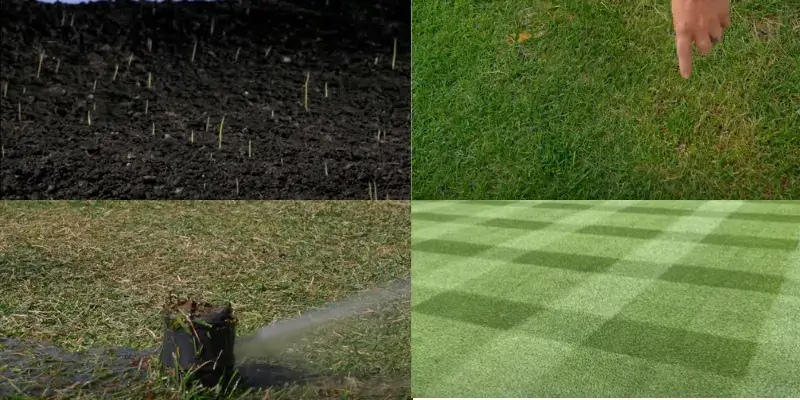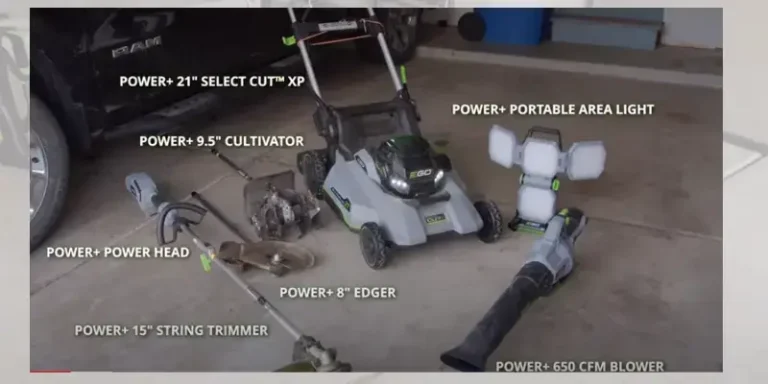Fastest Growing Grass Seed: You Should Definitely Know This
Fast-growing grass seeds are specially bred to sprout rapidly and establish lawns in a short period. Choosing the right type of grass seed is essential for anyone looking to quickly develop a lush, green lawn. It is a little bit confusing because every grass seed does not suit every environment. Multiple factors determine whether any particular seed works for you or not….. Let’s discuss this in detail.
Types of Fast-Growing Grass Seeds
When it comes to fast sprouting and robust growth, certain grass seeds stand out:
Ryegrass Grass Seeds
Known for its rapid germination, ryegrass can sprout in as little as 5 to 10 days. This quick emergence makes it a popular choice for lawn projects where speed is of the essence. Whether you’re overseeding a patchy lawn or starting from scratch, ryegrass provides swift coverage and fills in bare spots effectively.
Bermuda Grass Seeds
This type excels in warm climates and establishes quickly, making it a go-to option for areas with hot summers. Its ability to thrive in heat and drought conditions makes it a resilient choice for homeowners seeking a lush, green lawn without extensive watering and maintenance. With proper care, Bermuda grass can transform a barren landscape into a verdant oasis in no time.
Tall fescue Seeds
Adaptable to a variety of climates, tall fescue germinates quickly and is very resilient. Its versatility makes it suitable for both the northern and southern regions, making it a top pick for homeowners looking for a low-maintenance yet attractive lawn solution. Tall fescue’s fast growth rate ensures rapid establishment, allowing you to enjoy a lush lawn sooner rather than later.
Each of these types has specific attributes such as germination rate, climate adaptation, and growth pace that make them suitable for fast lawn growth.
Factors Influencing Growth Rate – Fast-Growing Grass Seed
Several factors influence the growth rate of grass seeds, determining how quickly they establish and develop into a lush lawn:
Soil Conditions
Soil quality significantly influences seed germination and plant growth.
- Grass seeds perform best in well-drained, nutrient-rich soils.
- The pH level of the soil can affect nutrient availability and water uptake.
- Soil compaction may hinder the growth of seedlings by limiting nutrient access.
- High organic matter content improves soil fertility and supports healthier seedling development.
Temperature
The germination and growth of grass seeds depend on specific temperature conditions.
- Warm-season grasses, such as Bermuda grass, require higher temperatures for effective germination and establishment.
- Cool-season grasses like ryegrass and tall fescue flourish in cooler conditions.
Monitoring both soil and air temperatures is vital to provide the most favorable conditions for seedling growth.
Watering Routines
Proper moisture levels are crucial for the germination and early growth of seeds.
- Consistent watering supports root development and prevents seedlings from drying out.
- Excessive watering can cause fungal diseases and root rot, hindering growth.
It’s important to balance irrigation to keep the soil moist but not waterlogged, promoting healthy seedling development.
Light Exposure
Adequate sunlight is essential for grass seeds to photosynthesize and grow effectively.
- Most grass varieties thrive with full sun exposure, though some can tolerate shade.
- Proper light penetration to the soil surface is crucial for vigorous seedling growth.
- Ensuring sufficient sunlight helps prevent thin, patchy areas in the lawn.
Seed Quality
The quality of grass seeds significantly affects their germination success and growth.
- Fresh, high-quality seeds with high viability and purity result in better germination rates and healthier seedlings.
- Using certified seeds from reputable suppliers guarantees consistent quality.
- High-quality seeds enhance the likelihood of rapid and successful lawn establishment.
Maintenance Practices
Effective lawn care practices are vital for promoting grass growth and maintaining lawn health.
- Regular mowing at the right height encourages lateral growth and better root development, leading to a denser lawn.
- Fertilization supplies crucial nutrients that support grass growth.
- Effective weed control minimizes competition for resources, ensuring optimal conditions for seedling establishment.
These are the factors that are important for taking appropriate measures, homeowners can optimize the growth rate of grass seeds and achieve a lush, beautiful lawn in a shorter time frame.
Climate and Temperature Requirements
Grass seeds do indeed have specific temperature requirements for optimal growth and germination. Matching the seed type to your local climate conditions is crucial for ensuring successful lawn establishment. Here’s a breakdown of the climate and temperature requirements for different types of grass seeds:
Warm-Season Grasses:
Examples: Bermuda grass, Zoysia grass, and St. Augustine grass.
Optimal Temperature Range: Warm-season grasses thrive in temperatures between 75°F to 90°F (24°C to 32°C) during the day.
Germination Temperature: These grasses typically germinate best when soil temperatures are consistently above 65°F (18°C).
Climate Suitability: Warm-season grasses are well-suited to regions with hot summers and mild winters, such as the southern United States and Mediterranean climates.
Cool-Season Grasses:
Examples: Kentucky bluegrass, ryegrass, tall fescue.
Optimal Temperature Range: Cool-season grasses prefer cooler temperatures between 60°F to 75°F (15°C to 24°C).
Germination Temperature: These grasses germinate best when soil temperatures range from 50°F to 65°F (10°C to 18°C).
Climate Suitability: Cool-season grasses thrive in regions with cold winters and moderate summers, such as the northern United States and parts of Europe.
Fast-growing seeds only work if you provide them with the required environment. You are not able to get the desired results without considering the climate condition of your region
Watering and Fertilization Practices
Consistent watering and proper fertilization are essential practices for supporting the fast growth of grass seeds. Important tips are as follows:
Watering Practices:
Consistency: Maintain consistent moisture levels in the soil to support seed germination and early growth. Water newly seeded areas lightly but frequently to keep the topsoil moist without causing waterlog.
Frequency: Water newly seeded areas 2-3 times per day, especially during dry or hot weather, to prevent the soil from drying out. As seedlings establish, gradually reduce the frequency but increase the amount of water applied to encourage deep root growth.
Timing: Water early in the morning to minimize water loss due to evaporation and reduce the risk of fungal diseases. Avoid watering in the evening, as prolonged moisture on foliage overnight can promote fungal growth.
Fertilization Practices
Timing: Apply a starter fertilizer specifically formulated for new seedlings shortly after seeding to provide essential nutrients for initial growth. Starter fertilizers typically have a higher phosphorus content to support root development.
Follow Recommendations: Follow the fertilizer manufacturer’s instructions regarding application rates and timing. Avoid over-fertilizing, as excessive nitrogen can stimulate excessive foliage growth at the expense of root development, leading to weak, shallow-rooted plants.
Soil Testing: Conduct a soil test before fertilizing to determine nutrient deficiencies and pH levels. Adjust fertilizer application based on soil test results to provide the necessary nutrients for optimal grass growth.
These are the tips which are practically result-oriented and give you amazing results in a short time and you can achieve beautiful and lush green lawns easily.
Advantages of Fast-Growing Grass Seeds
The advantages of selecting fast-growing grass seeds are numerous and include:
Quick Lawn Establishment: Fast-growing grass seeds germinate quickly, allowing for a lush lawn to develop rapidly. This is ideal for new properties or repairing damaged lawns, providing a beautiful lawn swiftly.
Erosion Control: These grasses stabilize soil and prevent erosion with their quick growth and dense roots, especially useful in areas like slopes or erosion-prone zones.
Ideal for Repairing Bare Patches: Fast-sprouting seeds quickly cover bare spots caused by wear or disease, enhancing both the look and uniformity of your lawn.
Selection Criteria for Fast-Growing Grass Seeds
When selecting fast-growing grass seeds, several key criteria should be considered to ensure successful lawn establishment and maintenance:
Matching Grass Type to Climate Zone
Select grass seed varieties that align with your local climate for optimal growth.
- Identify if your region is suited for cool-season or warm-season grasses.
- Choosing the right type ensures the grass is compatible with the local temperature and weather conditions.
- Appropriate selection promotes faster growth and better overall health of the grass.
Resistance to Pests and Diseases
Choose grass seed varieties that are resistant or tolerant to local pests and diseases.
- Research common pests and diseases in your area.
- Select grass types with proven resilience against these threats.
- Resistant varieties maintain consistent growth and reduce the need for expensive treatments.
Maintenance Requirements
Select fast-growing grass seeds based on your lawn care capacity.
- Consider the time and resources you can dedicate to lawn maintenance.
- Some grass varieties may need more frequent mowing, watering, fertilizing, or pest control.
- Choose grass types that match your desired maintenance commitment for sustainable lawn care.
Planting and Care for Fast-Growing Grass Seeds
Best Time to Plant
The optimal planting time varies by climate but generally falls in the spring or early fall when temperatures are mild.
Step-by-Step Planting Process
Prepare the Soil
- Start by clearing the area of debris, such as rocks, sticks, and weeds, to create a clean planting surface.
- Use a rake or garden fork to loosen the soil to a depth of about 2-3 inches (5-8 cm). This helps improve soil aeration and allows the grass roots to penetrate easily.
Spread the Seeds Evenly
- Use a broadcast spreader or hand-held spreader to evenly distribute the grass seeds over the prepared soil surface. Follow the recommended seeding rate provided on the seed packaging for the best results.
- Walk in a grid-like pattern to ensure thorough coverage, overlapping slightly with each pass to prevent gaps or sparse areas.
Cover Lightly with Soil
- After spreading the seeds, lightly rake the soil to cover them with a thin layer of loose soil. This helps protect the seeds from birds and wind while still allowing them access to light for germination.
- Avoid burying the seeds too deeply, as they require direct contact with the soil surface to germinate effectively.
Water Gently
- Water the newly seeded area gently but thoroughly immediately after planting to ensure good seed-to-soil contact and initiate the germination process.
- Use a fine mist or gentle spray setting on a hose nozzle to avoid dislodging the seeds or causing soil erosion. Keep the soil consistently moist but not waterlogged during the germination period.
Common Challenges and Solutions: Dealing with Weeds and Invasive Species
Managing weeds and invasive species is essential for maintaining a lush, fast-growing lawn. Here are effective strategies:
Regular Maintenance
- Establish a routine that includes mowing, watering, and overseeding to promote thick grass that naturally suppresses weeds by competing for light and nutrients.
- Mow at the species-recommended height to encourage robust grass growth and deter weed establishment.
Hand-Pulling
Effective for small weed patches, hand-pulling should remove the entire root system, especially when the soil is moist for easier extraction.
Herbicide Applications
- Use selective herbicides that target weeds while sparing the grass, following all manufacturer guidelines.
- Apply when weeds are growing actively and during appropriate temperature conditions, avoiding windy days to prevent drift.
Pre-Emergent Herbicides
- Apply these herbicides before weed seeds germinate to prevent establishment, creating a barrier in the soil.
- Timing applications in early spring and late summer can effectively reduce annual weeds.
Proper Lawn Care Practices
- Optimize growing conditions through adequate watering, fertilization, and soil management to maintain a healthy lawn that can outcompete weeds.
- Address issues like soil compaction, poor drainage, or nutrient deficiencies to diminish weed growth.
- soil compaction, poor drainage, or nutrient deficiencies that may contribute to weed growth.
Managing Fast Growth and Mowing Frequency
Maintaining the rapid growth of fast-growing grass ensures a healthy lawn. Here’s how to adjust your mowing schedule:
Monitor Growth Rate
Watch grass growth, especially during peak seasons like spring and early summer, to gauge mowing needs.
Adjust Mowing Frequency
- Increase mowing frequency during rapid growth periods, aiming to mow when the grass is one-third taller than its recommended height.
- For instance, if the ideal height is 2 inches (5 cm), mow at around 3 inches (7.5 cm) tall.
Follow the “One-Third Rule”:
- Stick to the “one-third rule” to avoid stressing grass. Never remove more than one-third of the grass blade length in one mowing session.
- If the grass is too long, raise the mower height initially to prevent excessive cutting.
Use Sharp Mower Blades
- Ensure the blades are sharp to achieve clean cuts, reducing ragged edges and susceptibility to pests and diseases.
- Sharpen blades regularly, ideally before each mowing season, for optimal performance.
Avoid Scalping
- Don’t cut grass too short, as it weakens plants and promotes weed growth.
- Adjust the mower height appropriately to prevent scalping and moisture loss.
Conclusion
Many seeds are fast-growing if you fulfill the requirements. After taking holistic steps like soil preparation, precise planting techniques, and diligent care, you can achieve a lush green lawn in a short time.
With the right approach, homeowners can transform their outdoor space into a picturesque oasis where they can unwind and revel in the beauty of nature. Fast-growing grass seeds offer not just speed, but also reliability, ensuring that the dream of a lush, green lawn can swiftly become a tangible reality for anyone willing to invest the time and effort into nurturing their outdoor environment.
External Resource
Types of Fast-Growing Grass Seeds
- Ryegrass Grass Seeds: https://www.seedranch.com/Clubhouse-GQ-Perennial-Ryegrass-Seed-50-Lbs-p/clubhouse-gq-rye-50lb.htm
- Bermuda Grass Seeds: https://www.homedepot.com/b/Outdoors-Garden-Center-Lawn-Care-Grass-Seed/Bermuda/N-5yc1vZbx62Z1z0zb7b
- Tall Fescue Seeds: https://www.seedsuperstore.com/catalog/cat-100013/1011tall-fescue
Climate and Temperature Requirements
- https://www.pennington.com/all-products/grass-seed/resources/all-you-need-to-know-about-bermudagrass
- https://scotts.com/en-us/shop/grass-seed/scotts-turf-builder-grass-seed-perennial-ryegrass-mix/scotts-turf-builder-grass-seed-perennial-ryegrass-mix.html
- https://forages.oregonstate.edu/tallfescuemonograph/old_sod_renovation/basics/temperature
Planting and Care for Fast-Growing Grass Seeds
Common Challenges and Solutions: Dealing with Weeds and Invasive Species
- https://www.homedepot.com/p/Compare-N-Save-32-oz-2-4-D-Broadleaf-Weed-Control-75311/203112354
- https://www.homedepot.com/b/Outdoors-Garden-Center-Lawn-Care-Weed-Killer/Pre-Emergent/N-5yc1vZbx6fZ1z1cns1
Managing Fast Growth and Mowing Frequency
- https://theturfgrassgroup.com/turf-care/bermuda-grass-height-cut/
- https://scotts.com/en-us/shop/grass-seed/scotts-turf-builder-thickr-lawn-sun-shade/scotts-turf-builder-thick-r-lawn-sun-shade-mix.html
- https://info.supersod.com/lawn-care/elite-tall-fescue-lawn-maintenance

About Naveed A Hashmi
In my childhood, I used to see my parents while working in the land, for these reasons today I have been serving the same as our own tradition and culture. I thus love to stay in it, because I want to learn something advanced and new so that I may improve my farm’s contour and help others with my experience.







